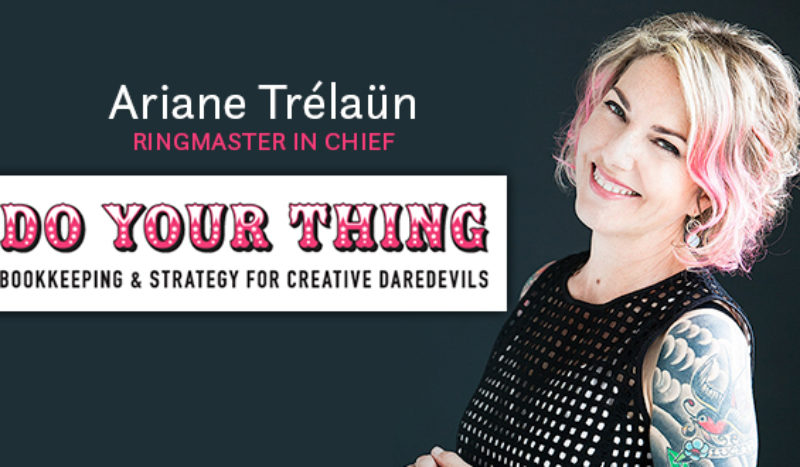The Attachment Style theory dates back to the 1950s, but has definitely been having its moment in the spotlight recently. Based on John Bowlby’s theory, there are four types of attachment styles, and they develop early in childhood and often remain stable over time.
Fun fact: life is about relationships. They are the spice, the thrill, the foundation, the support, the fun, the necessity for our survival and all the things in-between. They are not perfect and are rarely problem-free. If you take a few steps back, (or a mile, for an optimal viewpoint), you might be able to notice some patterns about your behavior in relationships, even if those relationships are in the workplace.
Let’s break down the four attachment styles, what those attachment styles might look like in different work situations, and how they could impact your thought process and response. Insecure attachment has three main types: Anxious-Preoccupied, Avoidant-Dismissive, and Disorganized.
Anxious-Preoccupied
Defined: The development of an anxious/preoccupied attachment style is associated with an inconsistent parenting pattern which makes it difficult for the child to understand what the parents’ behavior means and what kind of response to expect in the future. These mixed signals create confusion.
Avoidant-Dismissive
Defined: Children with an avoidant attachment style may have had parents who were strict, emotionally distant, and had no tolerance for the expression of feelings. These parents expected their children to be tough and independent. When these children become adults, they might appear confident and self-sufficient, however, they have a lack of tolerance for emotional or physical intimacy.
Disorganized / Fearful-Avoidant
Defined: This attachment style develops when the child’s caregivers, which should be a source of safety, become a source of fear. It is often seen in people who have been abused in their childhood.
Secure
A secure and stable attachment is formed when the caregivers are sensitive towards and attuned to the needs of the child. The caregivers’ presence equals safety. Through the bond, the child learns that they can rely on and trust other people.
Connecting the Dots
Role and responsibilities, jobs and careers, startups or corporations, all these may differ but there are dots to be connected between the situations you will find yourself in.
If you have experienced previous workplace traumas or have an insecure attachment style, you may internalize an incident at work, and create your own narrative as to why something is happening. Let’s look at a few common work scenarios, the possible thought process and response for the different attachment styles, and some helpful tips for working towards the most productive outcome. One thing to note is that the disorganized attachment style incorporates both the anxious and the avoidant attachment style in it.
Incident: Your boss tells you that you need to talk, doesn’t say what about, and adds a meeting to your calendar.
What is the story you’re telling yourself? According to Brene Brown (author, professor, and podcast host who is known for her work on shame, vulnerability, and leadership), you can give yourself a reality check by using that phrase. It’s a powerful tool for personal curiosity and reflection.
When you don’t have all the information, or the pieces to the puzzle, your brain goes into overdrive trying to make sense of it and fill in the blanks. And if you don’t pump the breaks, it can crank out some far-fetched scenarios.
Attachment style self-reflection:
The anxious or disorganized person might become stressed not knowing what the meeting is about, and start to think over all the interactions you’ve had with your boss over the last few weeks. If you continue down this spiral, you might come to the conclusion that you’re absolutely getting fired at this meeting.
The avoidant or disorganized person might feel like they don’t have control over the situation, and won’t necessarily open up because they want to be perceived as confident. You won’t tell anyone you’re stressed about this meeting, but you could be telling yourself something different.
Possible next steps:
Hopefully, you’re in a supportive work environment and can be proactive and talk about the incident with your boss. You can actually be pretty straightforward here and say something along the lines of “When you send check-in meeting requests, can you put a note in the description about why we’re having the meeting so I can be prepared?” This way, with every meeting, you know what to expect, and don’t have to use your energy wondering.
Incident: You were supposed to be looped in on a project, but meetings and milestones are happening without your input, or you’re taken off a project with no explanation
Attachment style self-reflection:
The anxious or disorganized person feels that being left out or removed from the project is definitely because they aren’t pulling their own weight, their ideas aren’t that good, or no one cares about what they think. Again, if you continue down this road, you’ll end up at the destination “I’m definitely getting fired”.
The avoidant or disorganized person doesn’t seek closeness with colleagues or leaders, so they might start to think that everyone is against them or out to get them. Plus, they aren’t as smart as you are, right?
Possible next steps:
If you’re missing meetings or milestones, take some initiative to ensure that you’re added to the next calendar invite and those moving forward. In this remote-work world, it’s easy to overlook adding someone to an invite. You could also align with the project manager (or whoever is pushing the project forward) to make sure that you understand what your contribution to the project is. You actually might not need to be included in 100% of the meetings! It’s still helpful to have a vision of the big picture so you know where your piece fits in.
If you were removed from the project altogether, connect with your boss first. They might have some additional insight that just hasn’t trickled down to you yet. The scope of the project might’ve pivoted, or you’re being pulled to work on something else. Don’t assume the worst.
Incident: You’re at a team building event and have to say something nice about your coworker
Attachment style self-reflection:
The anxious or disorganized person might constantly seek approval from their colleagues, so a moment like this might cause stress in coming up with the perfect thing to say so that your colleagues will absolutely love you. If you don’t give the nicest compliment, your colleagues will be put off by you. If you try too hard, they’ll think what you’re saying is disingenuous. Maybe it needs to be something funny, so that everyone will laugh and think you’re extremely humorous.
The avoidant or disorganized person does not seek closeness with colleagues, so you’re not going to spend a substantial amount of time writing a haiku about how nice your colleagues are. You might also tend to view group activities as unchallenging and beneath your level. Part of you wants to skip this activity all together.
Possible next steps:
At the core of these group exercises is an attempt to get employees to express gratitude and show appreciation for the work everyone does. Don’t put more thought into it than that, regardless of whether you’re anxious, avoidant, or disorganized.
Here’s an easy formula you can follow when giving your colleague a compliment. First, think about the last assignment or project you worked with them on, a contribution they made (no matter how big or small), and how it impacted you.
It will look something like this – “Joanne and I worked together on a data analytics project last week. She reformatted several spreadsheets for me which made it so much easier to write up a final analysis. I really appreciated that.”
Follow that format each time you need to give positive feedback, and it’ll cut down on the time you spend trying to think of something perfect to say, and it won’t feel like such a burden to participate.
Incident: You’re working on a project that is behind schedule, you need to request an extension.
Attachment style self-reflection:
The anxious or disorganized person might be leaning heavily into their feelings of self-doubt. It’s their fault they aren’t making the deadline, and once again they are failing at everything. They should’ve planned better, and they should’ve worked harder, this is all going to fall apart, and they’re terrified to even ask for a deadline because they have a strong fear of negative feedback.
The avoidant or disorganized person may possess a negative view of and criticism towards their boss. Additionally, they have an overall distrust towards others. They want to appear to be confident and in control, even if internally that’s not the case. The last thing they want to do is ask for an extension, and might even overwork themselves to keep up the facade.
Possible next steps:
Realistically, deadlines need to be shifted for a plethora of reasons. Some are within our control and others are not. Look at your past behavior to determine if requesting an extension has become a regular pattern for you. If it has, partner with your manager to come up with a game plan to start meeting your deadlines more consistently.
Are you underestimating how long it will take? Are you not taking into account other projects you are working on? Do you need advice on how to prioritize your work? Are you taking on too much? Answering questions like this could help you get a better sense of your workload and make more accurate estimates on when you’ll complete a project.
As soon as you have an inkling that you might not hit the deliverable, let the project manager or your boss know so that they can adjust the schedule accordingly. Give a realistic date on when you’ll be finished (and maybe even include an extra day as a buffer). The earlier the better, the worst time to let someone know you’re going to miss a deadline is after it has already passed.
Incident: A new role opens up at work and your colleague asks if you’re going to apply for it.
Attachment style self-reflection:
The anxious or disorganized person is thinking that they’re not good enough, as they often have high levels of insecurity. What if they apply for it and get rejected? They are hypersensitive to feedback. They might be wondering who else is going to apply for it and how they compare to the group? Furthermore, is this particular colleague asking if I’ll apply because they no longer want to work with me? One bad thought can lead to another, and the anxious or disorganized person is already thinking about how they’ll feel if they get rejected for a job they aren’t even sure if they want to apply for.
The avoidant or disorganized person is overly confident, so they might downplay their interest in the role or downplay the role itself. Since they tend to avoid interpersonal closeness with colleagues, the conversation on this topic will be short.
Possible next steps:
Truthfully, your colleague could’ve asked if you were going to apply for the open role just to make small talk while waiting for the Keurig to finish brewing. Don’t look too deep into this one. They also might be thinking of applying for it and wanted to gauge the temperature of other colleagues.
If you’re content with your current role and responsibilities, pay it no mind. If you’re uber-curious, check out the job description and determine if it’s a better fit. Perhaps it checks off more boxes than your current role?
If you’re interested, then allow yourself the safe space to fantasize about what this opportunity could look like. Not only has daydreaming been shown to reduce stress and anxiety (bonus), but it also helps with problem-solving (another bonus!). Only you know if this opportunity is right for you, and if it’s the right time to make it.
The Benefits of Your Attachment Style
Did you know that the anxious, avoidant, or disorganized attachment styles can actually have some benefits in the workplace? Say what?! That’s right, read on.
The anxious or disorganized person can be better at detecting and responding to risks. They also tend to create less friction in the workplace. They’re often looking for ways to improve, which in turn has a positive impact on their performance.
The avoidant or disorganized person works well independently. They can also sustain focus on the task in front of them and are results-orientated in the workplace. In other words, they get things done!
Recognizing what attachment style(s) you exhibit will help you notice when you start telling yourself a story that is exaggerated or absolutely not true. From there, take the steps to redirect your thought pattern, get to the truth of the situation, and progress towards an outcome that puts your mind at ease, or is at least more productive than worrying and overthinking.


